When I first told friends and family I was going to ride motorcycles in Colombia, I got more safety lectures than for any other place I've been. Jokes, too, about the cocaine and the women. The latter were all true, but of the former I saw no trace. Here's another truth I discovered about Colombia: It's not a place to be afraid of, despite its reputation.
In two weeks I traveled with Motolombia, a Danish/Colombian family-run touring company, around Colombia on what they call the "Giant Loop of Colombia" in a counterclockwise loop from Cali to the northern coast and back through every major city in the country, passing through villages and barrios in between. Motolombia packages a fine collection of major two-lane highways and backcountry byways, with dirt roads only where the pavement was washed out or under construction. Overall, the roads in Colombia are plentiful and in terrific condition.
We rode 11 of the tour’s 16 days, sunup to sundown, overall traveling nearly 2,000 miles (each day ranged from 100 to 300 miles). The weather and the landscape varied from foggy and cold to sweltering hot, from lowland flats and plantations to elevated ridge roads so high we couldn’t see the bottom.
The diversity of the flora and fauna was off the charts, too, with many of each that we never get to see in North America. More exciting to me, though, was seeing what strange animal might cross my path next: iguanas, armadillos, cats, horses, ringtail monkeys, and sloths. On foot in Medellin, we spotted two alligator-size iguanas on the riverbank. I was very happy to be standing 30 feet above them on a railway platform at the time.
Beyond the marvelous scenery, great roads, and friendly people, you’re bound to learn a little about yourself on a trip like this. In such a small group, I wasn’t able to hang back and fade into the background, quietly clicking away on the camera, as I usually do. Instead, I was thrust into a group dynamic that challenged me daily. I had nowhere to be alone except inside my helmet, where I was usually busy risking my life kilometer after kilometer. I not only mingled with the others, but I left the country having gained two new friends in San Francisco and Denmark who I’ll ride with again someday.
And speaking of good friends, I would have been nowhere in Colombia without Mikkel (Mike) Thomsen, who I met last year at the Overland Expo West. Like many of the former global motorcycle wanderers in Colombia, Mike came here on his way south to Ushuaia, Argentina, almost 20 years ago. He fell in love with the landscape, and the women, eventually returning here to settle down with his now-wife and partner Diana. Motolombia was born of humble roots as a Cali hostel with an owner willing to show people around on his motorcycle. Slowly they bought extra motorcycles, offering heightened experiences around Colombia for their hostel customers. Eventually they got wise and chose to ride every day, selling the hostel and starting Motolombia Touring Company in 2008.
On this journey I chose the BMW G650GS from Motolombia's stable of bikes for its ABS and heated grips. Because of the seasonal rains all over the country, I brought wet-weather gear, and in accordance with Murphy's Law, I needed it for exactly one day of the 16-day tour. Colombia is close to the equator, and it's warm everywhere, if not downright hot and humid. At the Caribbean coast, we saw 38 degrees Celsius (100 Fahrenheit) with 90 percent humidity—on December 1.
Most days began around 7 a.m. with an included breakfast at the hotel and a loaded departure of the bikes around 8 a.m. Each morning’s pre-ride ritual included repacking the Giant Loop saddlebag (provided with your rental) and remounting it to the bike. From then on it was a game of chance around every corner. Ignoring stop signs and the posted speed limits and crossing the yellow lines to pass are all time-honored local customs and necessary if you want to get anywhere.
Then, of course, there’s the coffee. The name Juan Valdez parallels that of Starbucks, if it doesn’t surpass it. On our second day on tour, in Salento, we toured a coffee plantation (you’ll see many signs for fincas, or farms, along the road) before leaving town, learning that a single coffee plant can live to be 20 years old and produce beans twice a year in this region.
Prefer juice with your breakfast instead of coffee? You’ll have more choices than a king in Colombia. With nearly five times more rain than we get annually in the US—though, somehow, they too are also having a drought—Mother Nature creates more juice-bearing fruits in Colombia than you’ll have time to drink, with or without rum. Guyabano (soursop), fresas (strawberry), naranja (orange), piña (pineapple), and cherimoya, or a mixture of any of those can be found just about anywhere, including alongside the road. Mark Twain called the cherimoya the “most delicious fruit known to men.”
Dear Mr. Clemens might have had something to say about preparedness too. Riding in Colombia requires you to expect the unexpected all the time. Check your mirrors while passing because someone might be passing you at that instant, necessitating a desperate dive for the shoulder. After dark, the stakes go up—way up. You can’t see the pedestrians walking in the road, or the animals, or the vehicles with busted taillights or headlights. You’ve heard the saying that you should ride as if you’re invisible? That saying could have originated in Colombia.
Perhaps in an effort to offset the stress of negotiating the live-action video game that is traffic in Colombia, Motolombia includes fuel in the cost of the tour so you don’t have to carry a wad of foreign cash or blow up your credit card with foreign-conversion fees. Colombia does its part for motorcyclists too, letting them ride free through all of the tollbooths in the country. A sign saying “Motos A La Derecha” (Motorcycles to the Right) is posted at every one. Good luck to you, though, if you’re riding a bike with wide saddlebags or a trike; the motorcycle lane is very narrow with high curbs on each side and usually has a speed bump or two to slow down impatient two-wheelers.
Lunch, or almuerzo, on the tour usually fell around 1 or 2 p.m., with a coffee/water/restroom stop slipped in between breakfast and lunch wherever possible. It was also often our biggest meal of the day, despite the possibly decreased appetite due to the humidity, but that’s how the locals did it. Pork chops, specialty soups such as sancocho (fish-based in the north, pork-based in the south), or chicken, were all very good and often very cheap, 10,000 to 15,000 pesos per plate. A soda, coffee, or bottle of water ran 2,000 pesos. The mandarins sold along the road were the tastiest I’ve ever had, with rinds that just fall off the body with ease. And they’re stupid cheap, as they’re grown mere feet from the pavement and sleeved in plastic nets for easy picking at the tolls.
Police in Colombia come in numerous forms, from the national force (Policía Nacional), which you’ll see most of the time, to the often-mischievous Department of Transportation workers. They all have guns but are usually very friendly. We were rarely stopped; more often we were given a thumbs-up from the many men standing along the road on both sides of the checkpoint. They were looking for drugs or guns, neither of which we had, or could carry much of anyway. Occasionally one of them peeked in our saddlebags or had their dogs give them a good sniff. It happened often enough that we stopped being surprised. Once they realized we were tourists, they were more than willing to smile back and maybe even pose for a picture—or allow you to climb on their battle tank, if you were lucky.
Despite the obvious security and the civil unrest and corruption that still runs rampant in Colombia, I never once felt uneasy or worried. Our guide had told us what to expect, but more important, once we opened our mouths and English words came out, the energy changed. Also a big help were the foreign-born and English-speaking locals who work for Motolombia and guided us around the country, always knowing where to go to get whatever we needed and how to solve problems the rest of us couldn’t, this time including getting a flat tire fixed, and finding items left in a hotel room two days ago.
This close to the equator, the sun’s journey across the sky can nearly be carved in stone. Sunrise and sunset happen at the same time every day, all year round—around 6 a.m. and around 6 p.m. It became our goal every day to get to our hotel before dark. On most days we made it in time for an hour or two of rest before we met up again for dinner. Early arrivals were rewarded with extra time to explore and stretch tired legs with a stroll around town.
Riding through a country is one thing, but seeing it is another. Sometimes that’s done best on foot, not on a bike, so Motolombia throws in a few rest days during the 2,000-mile tour, giving you time to interact with the locals, catch a few hours of sleep, do your laundry, work on your bike, or take a dip in the pool or the Caribbean.
It’s a faraway place in many ways, but it’s also very accessible. A flight from Florida to Cartagena or Medellin can be had for a few hundred dollars round trip, and with the strengthening dollar-to-peso ratio, it’s getting cheaper all the time to travel in Colombia. With $1 beer on the sidewalk in the city, massive $6 lunch specials in the countryside, Colombia can be as expensive as you want it to be. Hostels to five-star hotels, dirt roads to red carpets—it’s got everything you might ever want.
And Motolombia makes it easy to tailor a tour to your budget and desires, with offerings from one-day tours starting at $399 to a 17-day "all paved" tour with a 650cc bike for $4,990 (this is the Loop ride). There's also the Expedition Colombia Tour with plenty of off-road action; this 16-day tour also runs $4,990. Forget what you've heard about the dangers of Colombia. In my experience, with the right guides and a positive attitude, it's all good.










/cloudfront-us-east-1.images.arcpublishing.com/octane/QZMJOUAHBMKNW5TXHUC4HWDMI4.jpg)
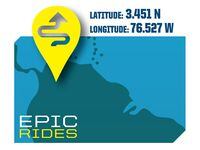
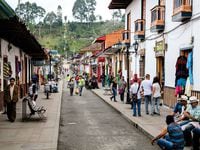
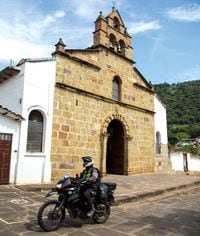

/cloudfront-us-east-1.images.arcpublishing.com/octane/U26OWZYGWUKH5Y3H4F4T6MHDHM.jpg)

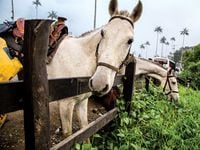
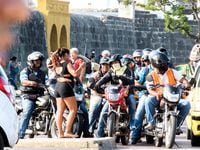
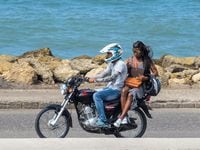


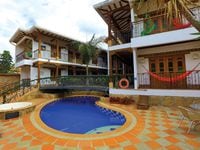

/cloudfront-us-east-1.images.arcpublishing.com/octane/MUQLOVLL2ZDGFH25ILABNBXKTI.jpg)
/cloudfront-us-east-1.images.arcpublishing.com/octane/TNOU5DNE2BC57MFPMGN2EIDXAM.jpg)
/cloudfront-us-east-1.images.arcpublishing.com/octane/GTCXACQGJ5HAPDTGWUQKDEH44E.jpg)
/cloudfront-us-east-1.images.arcpublishing.com/octane/S35YGSEMEZB4BLTDJTSZPF4GLA.jpg)
/cloudfront-us-east-1.images.arcpublishing.com/octane/5UOT6HPX2JFMRJAX6EH45AR4MQ.jpg)
/cloudfront-us-east-1.images.arcpublishing.com/octane/OKWOJWAKP5EP3OACCRRWPCIX2Q.jpg)
/cloudfront-us-east-1.images.arcpublishing.com/octane/2WF3SCE3NFBQXLDNJM7KMXA45E.jpg)
/cloudfront-us-east-1.images.arcpublishing.com/octane/G4MG6OUCJNBSHIS2MVVOTPX65E.jpg)
/cloudfront-us-east-1.images.arcpublishing.com/octane/IIGGWFOTOJGB7DB6DGBXCCMTDY.jpg)
/cloudfront-us-east-1.images.arcpublishing.com/octane/QSTCM6AVEZA5JJBUXNIQ3DSOF4.jpg)
/cloudfront-us-east-1.images.arcpublishing.com/octane/U4I7G625B5DMLF2DVIJDFZVV6M.jpg)
/cloudfront-us-east-1.images.arcpublishing.com/octane/B6XD6LS6IVCQPIU6HXDJSM3FHY.jpg)
/cloudfront-us-east-1.images.arcpublishing.com/octane/ICL63FEDDRDTTMINYICCEYGMDA.jpg)
/cloudfront-us-east-1.images.arcpublishing.com/octane/FCGZHQXRBZFLBAPC5SDIQLVF4I.jpg)
/cloudfront-us-east-1.images.arcpublishing.com/octane/WNOB6LDOIFFHJKPSVIWDYUGOPM.jpg)

/cloudfront-us-east-1.images.arcpublishing.com/octane/X33NU3E525ECRHXLNUJN2FTRKI.jpg)
/cloudfront-us-east-1.images.arcpublishing.com/octane/6KKT5NNL2JAVBOXMZYS5ZO76YA.jpg)
/cloudfront-us-east-1.images.arcpublishing.com/octane/J5RKG5O455GMPGQRF2OG6LRT7A.jpg)
/cloudfront-us-east-1.images.arcpublishing.com/octane/GX2CIZKQVRH2TATDM26KFG2DAE.jpg)
/cloudfront-us-east-1.images.arcpublishing.com/octane/ZWIDYSAKQZHD5BHREMQILXJCGM.jpg)
/cloudfront-us-east-1.images.arcpublishing.com/octane/CYUHJZCTSJCH3MRAQEIKXK7SCQ.jpg)
/cloudfront-us-east-1.images.arcpublishing.com/octane/LKOFINY56FCXJCANJ5M7ZDQUBY.jpg)
/cloudfront-us-east-1.images.arcpublishing.com/octane/4NBPDACMWJH63JQYJVK3QRBDZI.jpg)